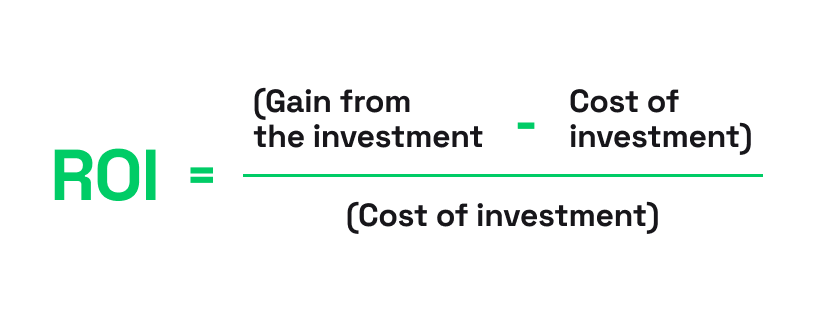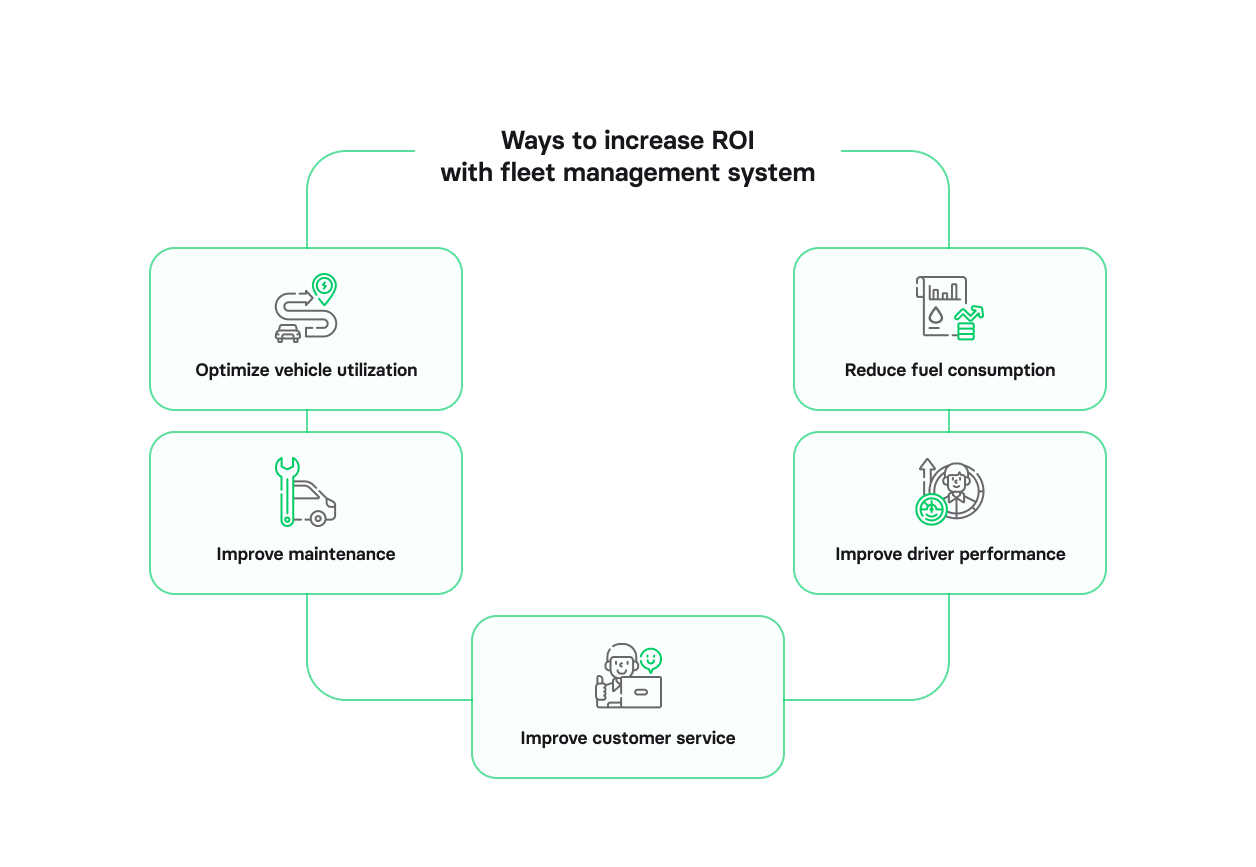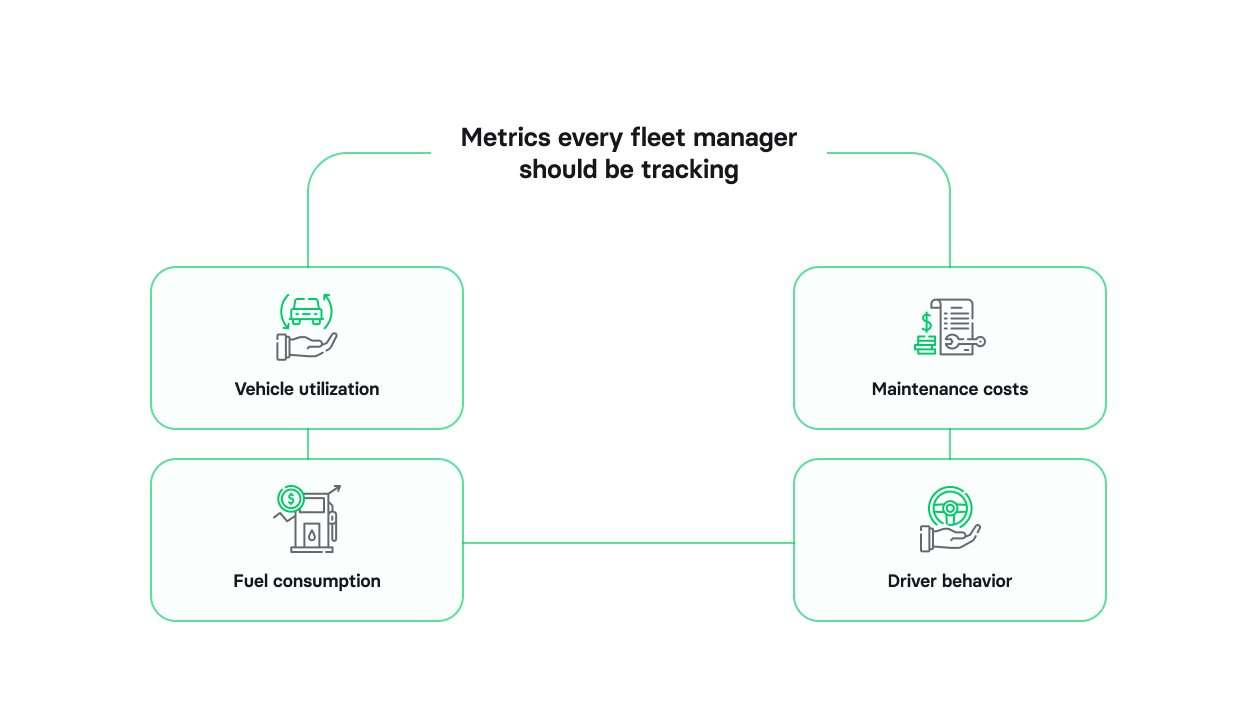Investing in custom software can be a significant expense. And to maximize ROI with a fleet management system it is crucial to build reliable and feature-rich software that offers comprehensive monitoring and efficient resource allocation.
However, the benefits that these systems can provide can make the expense worthwhile. With advancements in technology, fleet systems are becoming more sophisticated, offering greater insights, automation capabilities, and improved overall efficiency.
In this article, we’ll explore how your company can maximize its ROI by implementing fleet management software. And if you’re looking to enhance your fleet operations further, we offer fleet management application development services tailored to your specific needs. You can always reach out to us via info@volpis.com to schedule a free consultation.
What is fleet management ROI?
Fleet management ROI (Return on Investment) refers to the financial benefits a business receives from implementing a new system or upgrading its existing one.
Calculating ROI involves comparing the cost of the system to the financial gains it generates. This calculation can be made using a simple formula:
ROI = (Gain from the investment – Cost of investment) ÷ (Cost of investment)

To truly maximize ROI, however, it’s essential to understand how the benefits of software translate into financial gains.
Overall, by knowing the costs and benefits of the investment, you can make informed decisions about which systems to use and how to maximize your ROI.
Keep in mind that to avoid falling prey to false claims and exaggerated promises, businesses should thoroughly evaluate track records and customer reviews of software development companies before making an investment decision.
Ways to increase ROI with fleet management system

Fleet management software implementation can provide numerous benefits, including improved safety, better maintenance practices, and a competitive advantage. Here are some effective ways to boost your profit:
Reduce fuel consumption
The software can help you identify areas where you can reduce fuel usage, such as by optimizing routes and monitoring driver behavior. By tracking the lanes you travel, you can identify which roads are most efficient and cost-effective for your business.
Optimize vehicle utilization
Ensuring that your fleets are being used to their full potential can help reduce costs. A fleet management platform can enable your company to get the most out of its fleet.
Streamline maintenance
When a vehicle is undergoing repairs, it is not generating any profits. Preventative maintenance can help to reduce breakdowns and repair costs, which can have a significant impact on ROI.
Improve driver performance
Driver behavior can have a significant impact on fuel efficiency and maintenance costs. Fleet management solutions can enable tracking speeding or idling, and provide coaching and training to help drivers improve their performance. Video footage can provide valuable insights into driver behavior, vehicle incidents, and overall fleet performance.
Enhance customer service
The software can provide accurate and timely information to customers, which will improve their experience and increase loyalty.
A robust platform can provide insights into which areas are driving the most value. But to enhance your fleet management software ROI, it’s crucial to choose the right technology that aligns with your business needs and goals. To make an informed choice, consider checking out this comprehensive guide to fleet management software development, which can provide valuable insights into the latest trends and best practices in the industry. This will help you align your technology selection with your business objectives for maximum ROI.
Metrics every fleet manager should be tracking

The first step to maximizing your ROI is to identify the key metrics that you will need to track:
Metric 1: Vehicle utilization
By tracking fleet performance, you can identify vehicles that are being underutilized and either reduce their usage or re-allocate them to areas where they are needed more.
Metric 2: Maintenance costs
Maintenance can be a significant expense, so it’s important to track how much you’re spending on it. By identifying trends in maintenance costs, you can take steps to prevent breakdowns and reduce overall costs.
Metric 3: Fuel consumption
By understanding what vehicles are using more fuel than they should be, you can take steps to reduce the consumption of fuel and reduce expenses.
Metric 4: Driver behavior
Unsafe or inefficient driving can lead to increased expenses, maintenance costs, and even accidents. By understanding driver behavior, you can discover areas where your drivers may need additional training or support.
Success in maximizing your ROI with a fleet management system requires a commitment to ongoing monitoring, analysis, and improvement. It’s important to have a seamless flow of data between drivers and managers. By measuring these key metrics, you can identify areas where you can make improvements to your operations and ultimately increase your ROI.
How we can help maximize your fleet management ROI
Advanced technologies (such as predictive analytics and automated reporting) can significantly improve your operational efficiency and improve decision-making processes.
At Volpis, we understand the importance of maximizing your ROI. That’s why we specialize in building custom fleet management systems tailored to meet the specific needs of companies.
If you have any questions about maximizing your fleet management ROI, please do not hesitate to schedule a free consultation. We would be more than happy to assist you and offer our expert guidance to help you achieve your business goals.
FAQ
By analyzing data on driver behavior and vehicle performance, fleet managers can identify inefficiencies and implement strategies to reduce costs and increase productivity. For example, data insights can help managers optimize routes, reduce fuel consumption, and minimize downtime, all of which can result in significant cost savings and improved ROI.
Safer driving practices can result in reduced vehicle downtime and decreased costs associated with accidents. In addition, investing in driver safety can improve employee morale and retention, leading to a more productive and efficient workforce. Ensuring compliance with regulations and safety standards is essential for managing a successful fleet.
By providing real-time location tracking and automated route planning, fleet managers can optimize their workforce and ensure that fleets are being used efficiently. Automated reporting and record-keeping can reduce the time and resources needed for manual record-keeping tasks, allowing employees to focus on other priorities.
Generally, businesses can expect to see a positive ROI within 6 to 12 months of implementing fleet management software, as it can help to reduce costs, improve efficiency, and increase productivity. However, the exact timeline may vary and will depend on the specific circumstances of each business.

Kostya Khuta, the CEO of Volpis, is an expert in crafting custom software solutions for the Fleet Management, Logistics, and Transportation industry. With over 8 years of experience, he leads the way in delivering innovative and tailored solutions to meet industry-specific needs.





